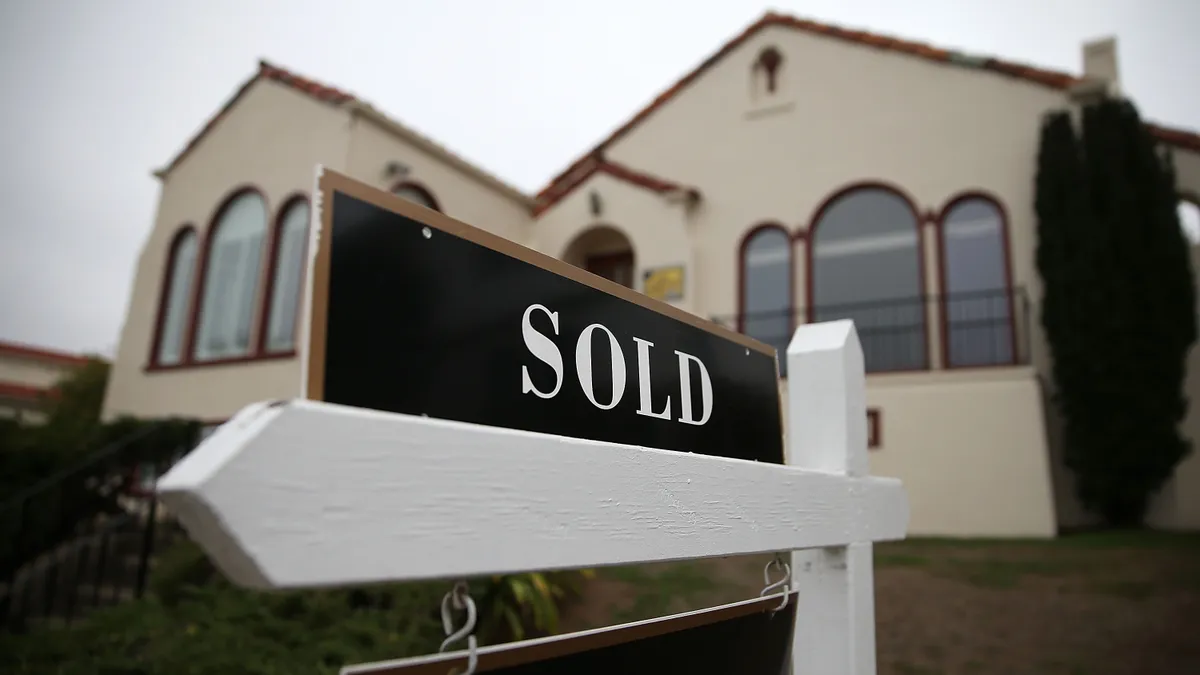Dive Brief:
- U.S. home prices on the S&P/Case-Shiller national Home Price Index rose higher than expected — 5.2% — from March 2015 to March 2106, an indication that the housing recovery is intensifying but still influenced by a scarcity of supply, The Wall Street Journal reported.
- In the 20-city index, Portland, OR, prices increased the most in March, at 12.3%, followed by Seattle at 10.8%, while Minneapolis grabbed the top month-over-month, seasonally adjusted spot with a 1.3% uptick, according to Bloomberg.
- Home prices are only 4% below their 2006 highs, but, adjusted for inflation, prices are actually 20% below their peaks of a decade ago, The Journal noted.
Dive Insight:
New home sales reached an eight-year high in April, up 16.6% from March. However, as the momentum of the spring and summer season kicks up, rising home prices should make finding a deal difficult for many buyers, particularly first-timers who are facing a scant supply.
Although new home sales are setting a brisk pace, overall sales still have room to grow, and new construction starts are far below pre-crash activity. Stronger numbers in the higher-end markets also could mean that the lower-end markets are still having trouble finding their footing in the post-crisis housing environment, The Journal noted.
This month, Zillow also reported that limited inventory had helped boost April's year-over-year home prices 4.9% — almost 3% higher than it had predicted. The real estate data company said there were 3.4% fewer homes for sale in April 2016 than in April 2015 and that 7.8% fewer starter homes had come on the market.
Tight inventory conditions continue to plague the market, as the rising median price of new homes reflects the extreme competition for available properties. Real estate groups have called on builders to ramp up construction of new homes, but builders point to increasing regulatory costs as a major obstacle to adding more inventory.














